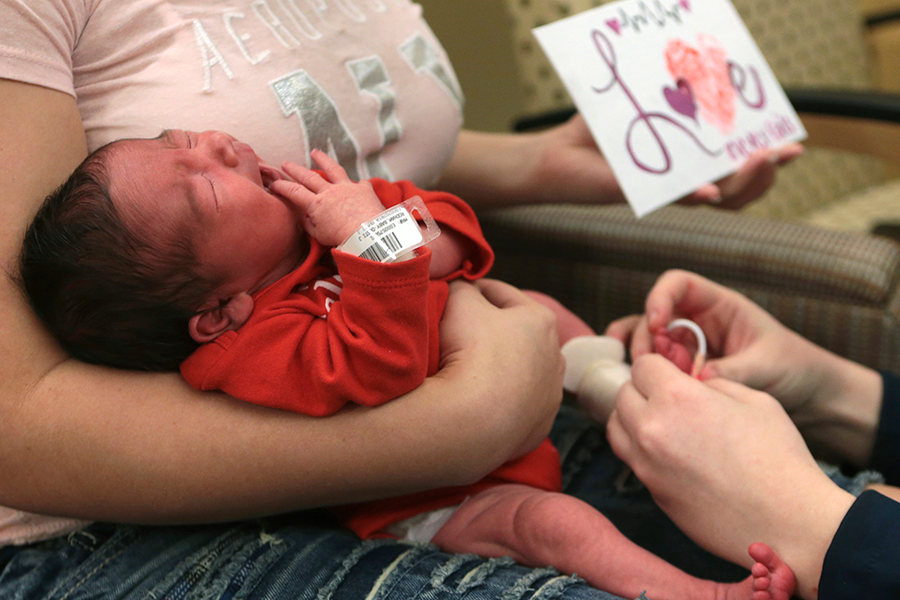US infant mortality rate declines, but disparities remain
Loading...
The rate of infant deaths in the United States has improved, the Centers for Disease Control and Prevention said in a study released on Tuesday.
The infant mortality rate dropped 15 percent over the past decade, from a record high 6.86 infant deaths per 1,000 live births in 2005 to 5.82 in 2014, data show. While the new report indicates a promising development in the country’s public health, commentators say the United States has a long way to go to catch up peer nations.
Across the country, a rising number of babies are living to their first birthday in most states – 33 states and Washington, D.C., to be exact – and the remaining 17 states saw no significant change, the reports said. The researchers of the study credited awareness and education programs with helping to reverse the trend.
"I think there was a public health push in the past decade to figure out ways to lower this rate, and it has made an impact," report author T.J. Mathews, a demographer at the CDC's National Center for Health Statistics, told CNN on Tuesday. "We know that there have been a lot of efforts across the country in cities and states where they're trying to figure out ways where they can lower the infant mortality rate."
While the infant deaths rates of almost all race and ethnic groups followed the larger trend of decline, American Indian or Alaska Natives saw no significant change. Among the declines, infant mortality rates of Asian or Pacific Islander fell the most of 21 percent, followed by non-Hispanic black women at 20 percent.
Yet, the disparity among racial groups remains stark, observers said. As babies born to non-Hispanic black women are more than twice as likely to die before their first birthday as those born to a non-Hispanic white woman, a point Slate’s writer Christina Cauterucci highlighted as “the most troubling aspect” of the data.
“A web of social and economic barriers maintain these disparities; better maternal and infant care can only improve infant survival rates so much,” she wrote in a piece on Tuesday. “When mothers have lived for decades with inadequate access to health care and suffered the health consequences of structural inequities such as food deserts and environmental injustice, as mothers of color disproportionately do, they are far more likely to give birth to low-weight or pre-term babies, who are less likely to survive.”
The new study also shows the infant deaths rates attributed to Sudden Infant Death Syndrome (SID) fell 29 percent, the largest among the five leading causes. Efforts such as a New Jersey program launched in January that gives out free baby boxes that contain infant care essentials and sleep safety information to new parents aim to further reduce that number.
Despite the improvement, the United States still falls behind many other industrialized nations. According to a list maintained by the Central Intelligence Agency, the United States ranks 56th with an estimated infant mortality rate of 5.8 in 2016, trailing after countries such as Canada, Singapore, and a number of European countries. Monaco and Japan are at the top of the list, with rates lower or equal to 2.0.
The stubbornly high infant mortality rate in the United States caught national attention in 2010, as Stephen Kurczy reported for The Christian Science Monitor.
"We have to ask whether it’s acceptable that the United States, which spends more on health care than any country in the world, has a child mortality rate that is more than three times as high as Singapore and a newborn mortality rate that is four times as high,” Christopher Murray, director of the Institute for Health Metrics and Evaluation at the University of Washington, told Mr. Kurczy at the time. “As federal health reform programs roll out, this is an opportunity for the US to look for ways to improve."








